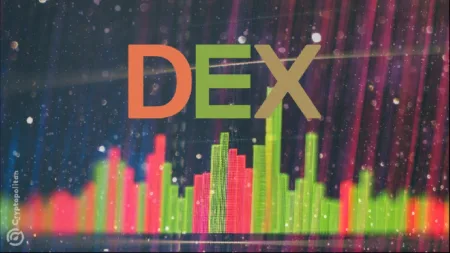Key Takeaways
- Ether.fi and EigenLayer enable ETH holders to maximize their staking returns by combining restaking and DeFi yield opportunities.
- Because these protocols are new, they are higher risk.
- Investors can start exploring Ether.fi and EigenLayer with modest deposits (never stake more than you are willing to lose).
Think of Ethereum like a high-interest savings account, with a twist.
By depositing your Ether (ETH), it gets locked up for a certain period (similar to a money market or CD). This locking, or “staking,” helps secure the Ethereum network. In return for staking your ETH, you earn staking rewards (similar to how a bank pays interest).
The key difference: Unlike a traditional savings account, new products on Ethereum allow you to reinvest your staking rewards to earn even more ETH automatically.
This is done through Ether.fi and EigenLayer, two separate products that work together to handle your deposits, manage the security, and automatically reinvest your interest payments for you.
This process of reinvesting your rewards for even greater returns is a bit like taking your interest from a savings account and putting it into another high-yield account to grow your savings even faster.
But it does have risks, such as impermanent loss, potential loss of staked funds due to technical issues, and smart contract risk. Don’t stake more than you’re willing to lose.
In this guide, we’ll cover how restaking works, using EigenLayer and Ether.fi. Think of it as “staking on steroids.”
The State of Staking
Ethereum’s move to Proof-of-Stake (PoS) was a major technological achievement. But some investors worried anew that it would lead Ethereum to become centralized in the hands of a few big players.
This is because staking is time-consuming and expensive: validators must lock at least 32 ETH to help secure the network and earn staking rewards. As of this writing, that means staking over $105,000, not to mention running complex “validating nodes” that must be monitored 24/7.
Staking services were invented to solve this problem.
Staking services allow ordinary investors to stake any amount of ETH. They pool this staking capital and run the validating nodes for you, paying most of the rewards back to stakers, making it easier for regular people to stake – and decentralizing the network, to boot.
Staking services have proven wildly popular, increasing the number of validating nodes.
Because this is crypto, these staking services began issuing their own tokens, called liquid staking tokens (LST), which they issue as a “receipt” for your ETH on a 1:1 basis. (Stake 1 ETH = get 1 LST.)
The most popular of these staking services has been Lido (LDO), which has quickly taken over a large portion of the staking market, raising fresh concerns about the centralization of Ethereum.
Meanwhile, ETH stakers found they could take their Lido “receipt” token and stake it further, earning yield on top of yield or rewards on top of rewards. (See our piece on Best Rates on Liquid Staking Derivatives.)
But what if this “restaking” could be automated using smart contracts? Enter EigenLayer and Ether.Fi.
EigenLayer: The Infrastructure for Restaking
EigenLayer is an Ethereum-based protocol that introduced the concept of restaking.
This enables you to earn more rewards by repurposing your staked ETH to provide security for protocols other than Ethereum, such as Layer-2 networks, data layers, or decentralized applications.
In other words, EigenLayer is an infrastructure for pooled Ethereum security, which allows you to earn higher rewards while also improving the security and efficiency of dapps.
As a bonus, EigenLayer also contributes to a more decentralized network by allowing more people to stake more easily.
Since its launch in 2023, the total value locked (TVL) through EigenLayer has surged to over $12 billion:
On a side note, another EigenLayer product is EigenDA, a data availability layer that leverages pooled network security. For example, some Ethereum Layer-2 solutions can use EigenDA for more efficient data management to cut costs and increase throughput.
In short, EigenLayer is the infrastructure for restaking. Ether.Fi is the restaking product itself.
Ether.fi: The Restaking Product
Running on top of Eigenlayer, Ether.fi is a product that allows easy restaking: your ETH staked in Ether.fi is automatically restaked through EigenLayer for higher staking rewards.
However, when you stake ETH in Ether.fi, you receive eETH (the receipt token) in return. (Stake 1 ETH = receive 1 eETH.) And your eETH can be invested in other DeFi platforms to earn even more income.
Thus, Ether.fi stakers have three streams of income:
- Pure ETH staking;
- Additional rewards generated by restaking through EigenLayer;
- Using your eETH for further DeFi yield.
To participate in DeFi, users can wrap their eETH to weETH, the non-rebasing token designed for DeFi use.
Ether.fi offers an automated DeFi strategy vault called Liquid. Users can deposit eETH or weETH with Liquid, which does all the behind-the-scenes work by allocating to multiple DeFi positions for maximum rewards.
NOTE: The more you build this “Jenga tower” of staking and restaking, the more risk you take on. Please watch this famous clip from “The Big Short” for a visual:
The TVL of Ether.fi’s Stake product has surged from $100 million at the beginning of 2024 to $3.3 billion, reflecting the increasing interest in restaked LSTs.
Risks and Considerations
EigenLayer and Ether.fi are both relatively new technologies that have not been proven over the long term.
By using EigenLayer, Ether.fi is automatically exposed to its risks, which Ethereum co-founder Vitalik Buterin pointed out.
These risks include:
- Slashing: There is a small risk of slashing. Up to 100% of your ETH can be cut in the case of dishonest behavior.
- Centralization risk: EigenLayer can become a systemic risk to the Ethereum network if it grows too big and is exploited.
- Yield risks: If more stakeholders aim for a higher yield of AVSs, the resulting yield for actual protocol stakeholders may decline.
As with any decentralized protocol, there are also smart contract risks for Ether.fi and EigenLayer: the code might not work correctly or might get hacked.
Due to their novelty, EigenLayer and Ether.fi are inappropriate for casual ETH holders. But if you’re tech-savvy and want to experiment with the highest-earning opportunities, just be sure to stake no more than you are willing to lose.
Investor Takeaway
EigenLayer and Ether.fi have the potential to transform Ethereum staking by introducing easy restaking and DeFi opportunities, thus increasing the amount you can earn on your ETH.
However, they come with significant risk, so we urge caution for investors who wish to experiment with them.
Read the full article here









